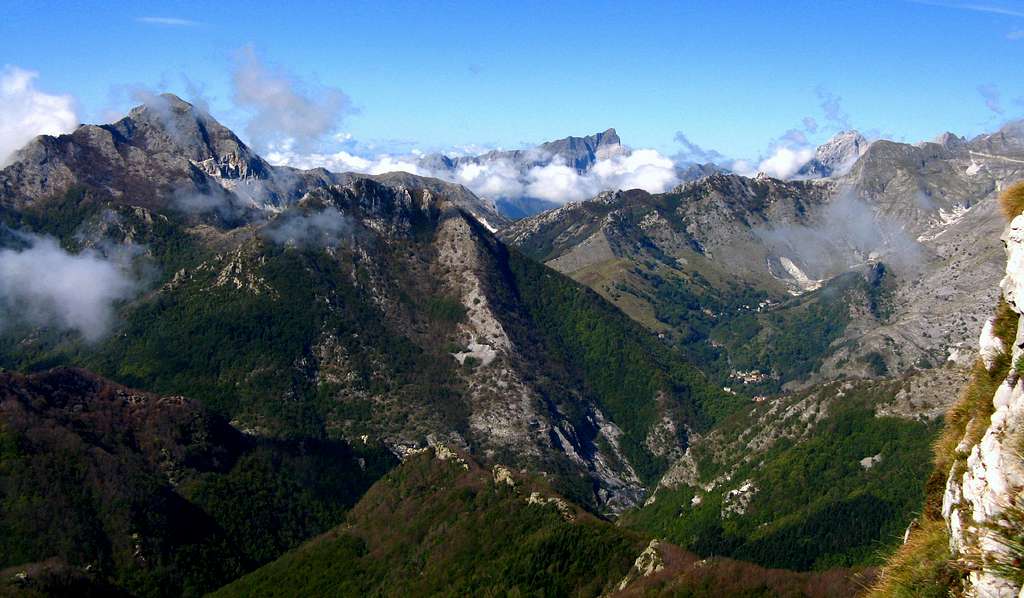|
|
Mountain/Rock |
|---|---|
|
|
44.03052°N / 10.29673°E |
|
|
Tuscany |
|
|
Trad Climbing, Sport Climbing |
|
|
Spring, Summer, Fall |
|
|
5502 ft / 1677 m |
|
|
Overview
Monte Corchia 1677 m
Monte Corchia 1677 m is situated in the Alpi Apuane group. As their name says, the Alpi Apuane are comparable to the Alps rather than to the neighbouring Northern Apennines, as their steep peaks resemble to the alpine ones, rather than to the rounded mountains of the Apennines. Monte Corchia has two summits connected by a long ridge. Towards Foce di Mosceta Monte Corchia shows an uniform slope, on the contrary to the West it forms different varied rock bands up to 200 meters high, originating some towers interspersed with rocky gullies, as for example the Torrioni del Passo di Croce on the right edge of the Western side. On the left end the Western rocky band ends above Passo di Fociomboli with three pillars, also separated by gullies. The central part of the long rocky band shows instead a large open wall.
Getting There
The closest village is Levigliani, located in the inland of Versilia, a region on the tyrrenian coast in the province of Lucca.
- From A12 Genova-Livorno motorway exit Versilia, take the road to Seravezza. At the crossroad take towards Castelnuovo di Garfagnana and reach Levigliani. About 2 km. after the village of Levigliani take a road on the right rising with several hairpins to Passo Croce. Follow the left road becoming unsurfaced and park the car along the road just below the West face of Monte Corchia. Different path traces depart from the road running below the wall towards the base of the various sectors of climbing.
Main routes
The routes on West face from left to right:
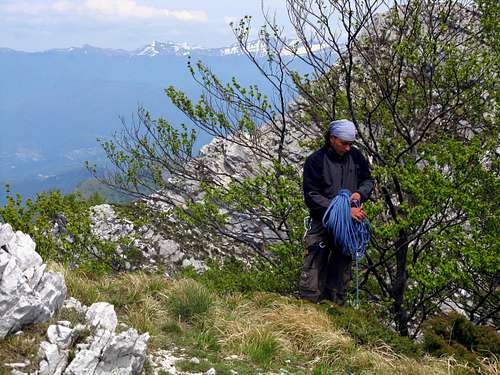
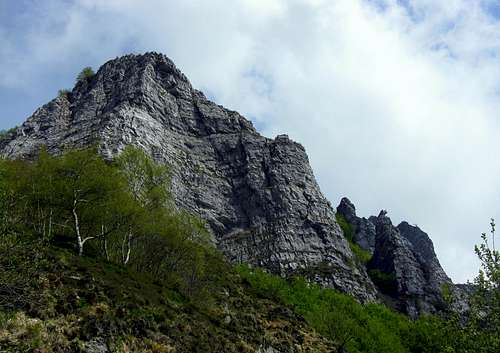
- Spigolo di Fociomboli 5b (5a obbl), 180 m - The route follows the obvious ridge on the left end of the wall, just above the Fociomboli pass
- Padre Corchia 7a+ (6b+ obbl./A1), 170 m - The route start just to the right of the Spigolo di Fociomboli
- Amico Almo 6a+/A1 (5c obbl), 200 m - The route runs on the right of the pillar of Spigolo di Fociomboli. Start and first pitch common with "Padre Corchia", then "Amico Almo" runs to the right along a dihedrals' system.
- Banda Bailar 5c, 280 m. The route runs to the right of Erik. See the route description here: Banda bailar
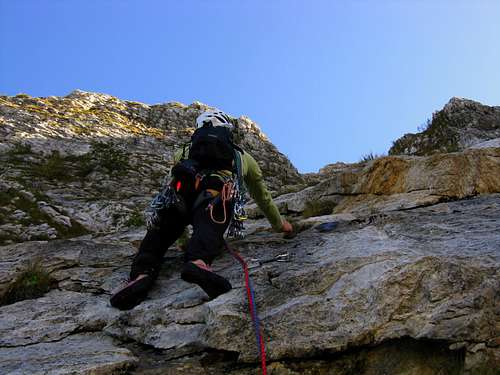
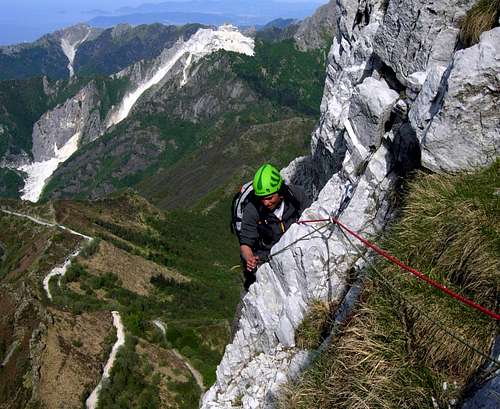
- La Volpe e la Folaga 6a (5c obbl), 150 m - To the right of Banda Bailar
- Primo torrione di Passo Croce - Ovo Fritto 6a+ (6a obbl), 150 m.- Route full equipped. See the route description here: Ovo Fritto
- Secondo Torrione di Passo Croce - Via classica 5a, 160 m - Classic route equipped with pegs. See the route description here: II Torr. Corchia Via Classica
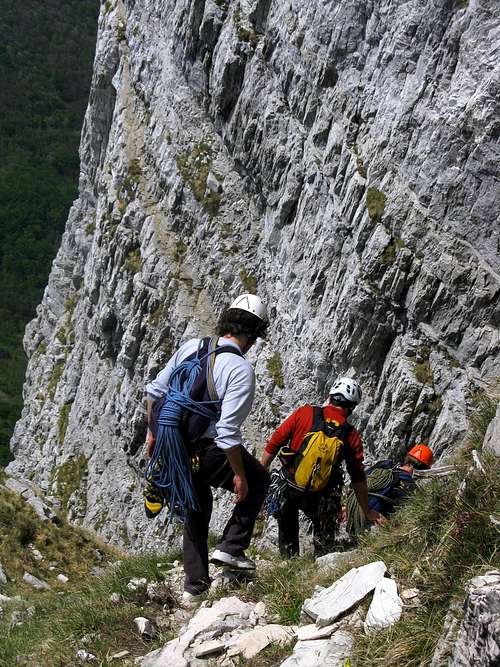
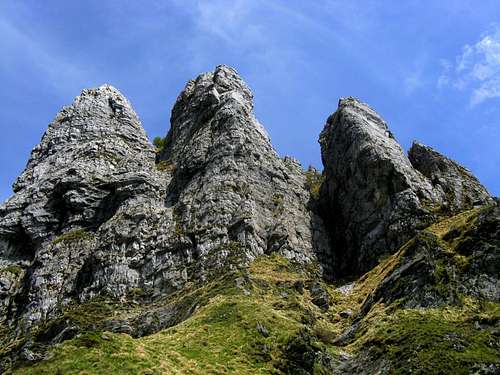
Route: Erik
Via Erik description
Difficulty: 5c (5a obbl) - French scale
Length: 240 m
Pitches: 9
Exposure: West
Starting point: Passo Croce (Stazzema, LU)
Pleasant and well-protected historic route on good rock. The route is equipped with bolts.
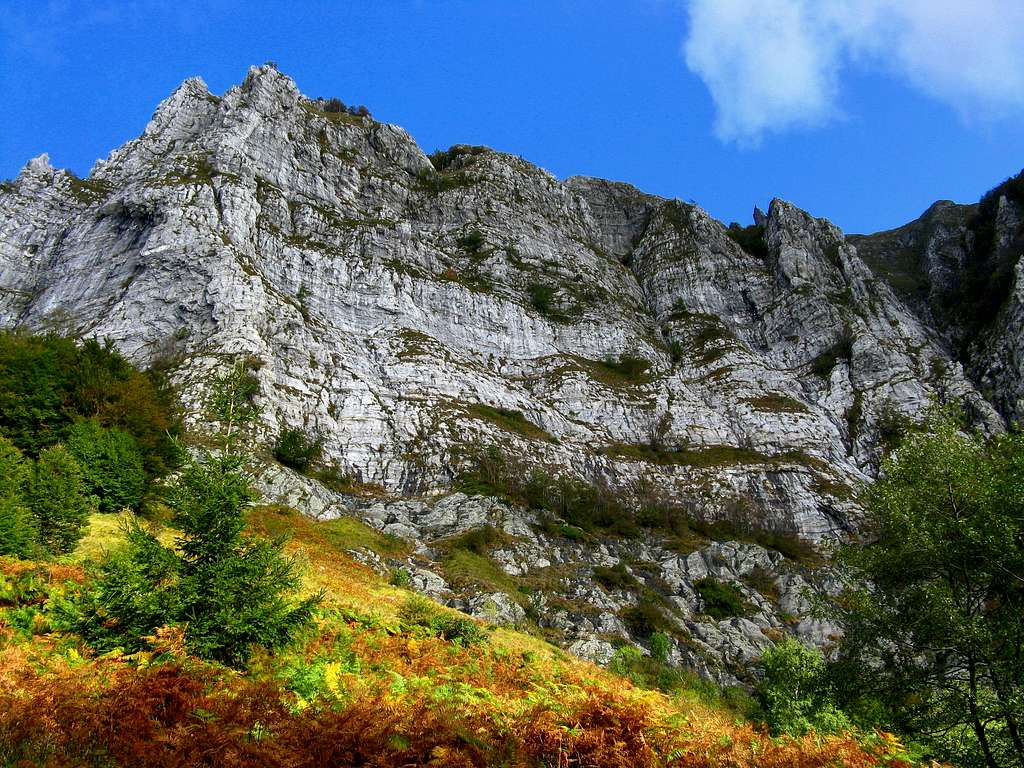
From Passo Croce continue along the dirt road towards Fociomboli. The road becomes paved and dirt again. At this point park on the first parking lot and take the path on the right that in 10 minutes leads to the starting point (white arrow and name "Erik")
Route description
L1 - Beautiful slab, 4c
L2 - Directly on slabs alternating with terraces, 4c at the beginning then easier.
L3 - Again slabs alternating with terraces, 4c
L4 - Again slabs. After the first protection the route continues slightly to the right and becomes steeper. Not to be groped by the recent spit just ahead, it's another route, 4c
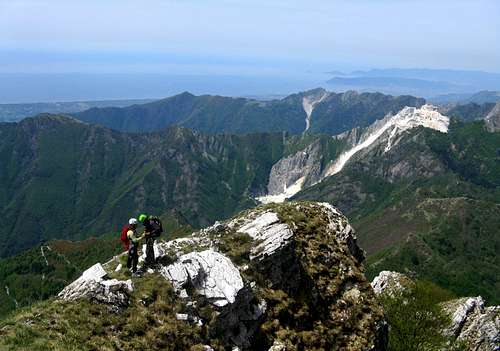
L5 - From the belay head to left and overcome a overhang, then a crack and a slab, 5c
L6 - Another small overhang and a slab, 5b
L7 - Exit on the left of the roof, cross the grassy ledge towards a nice vertical slab, climb it to the belay, 5b
L8 - Towards left climb a small roof, then a chimney-dihedral, 5b
L9 - After a sloping slab towards left climb directly to the belay inside a groove, 4b
L10 - Few meters on grassy ground to reach the crest (belay on an outcrop)
Descent - follow a narrow path on the ridge eastward, then enter a wood and downhill on tracks (marked with small cairns) until you reach the dirt road that followed to the left leads back to the parking lot
Essential gear
Rope 2x60, harmess, helmet, 12 quickdraws, slings
Red Tape
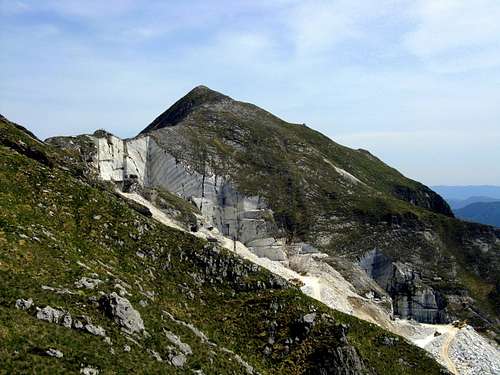
No particular restrictions in climbing and hiking, even if all Alpi Apuane range is situated inside a natural park – Alpi Apuane Natural Park – established in 1985 to protect the milieu.
When to Climb
Best period to climb goes from April to October
Where to stay
Hotels in Levigliani
Bibliography
“Toscana e Isola d’Elba – Falesie e vie moderne” by Mauro Franceschini e Fabrizio Recchia – Edizioni Versante Sud, 2016
“Alpi Apuane” by E. Montagna – A. Nerli – A. Sabbadini Collana Guide dei Monti d’Italia - CAI - TCI
Map: Alpi Apuane 1:25000 ed. Multigraphic



